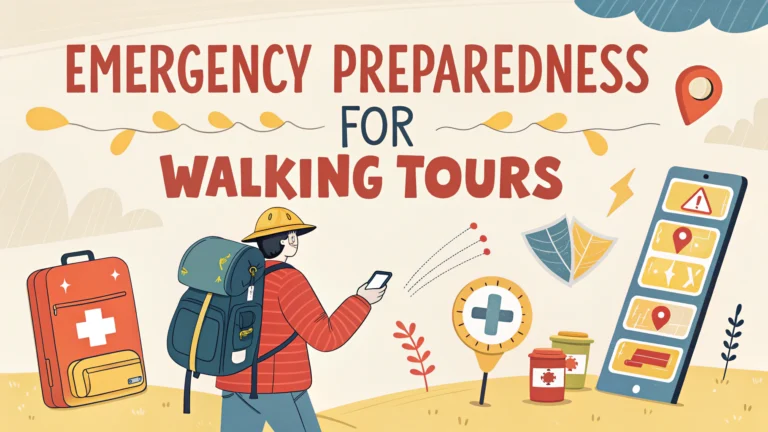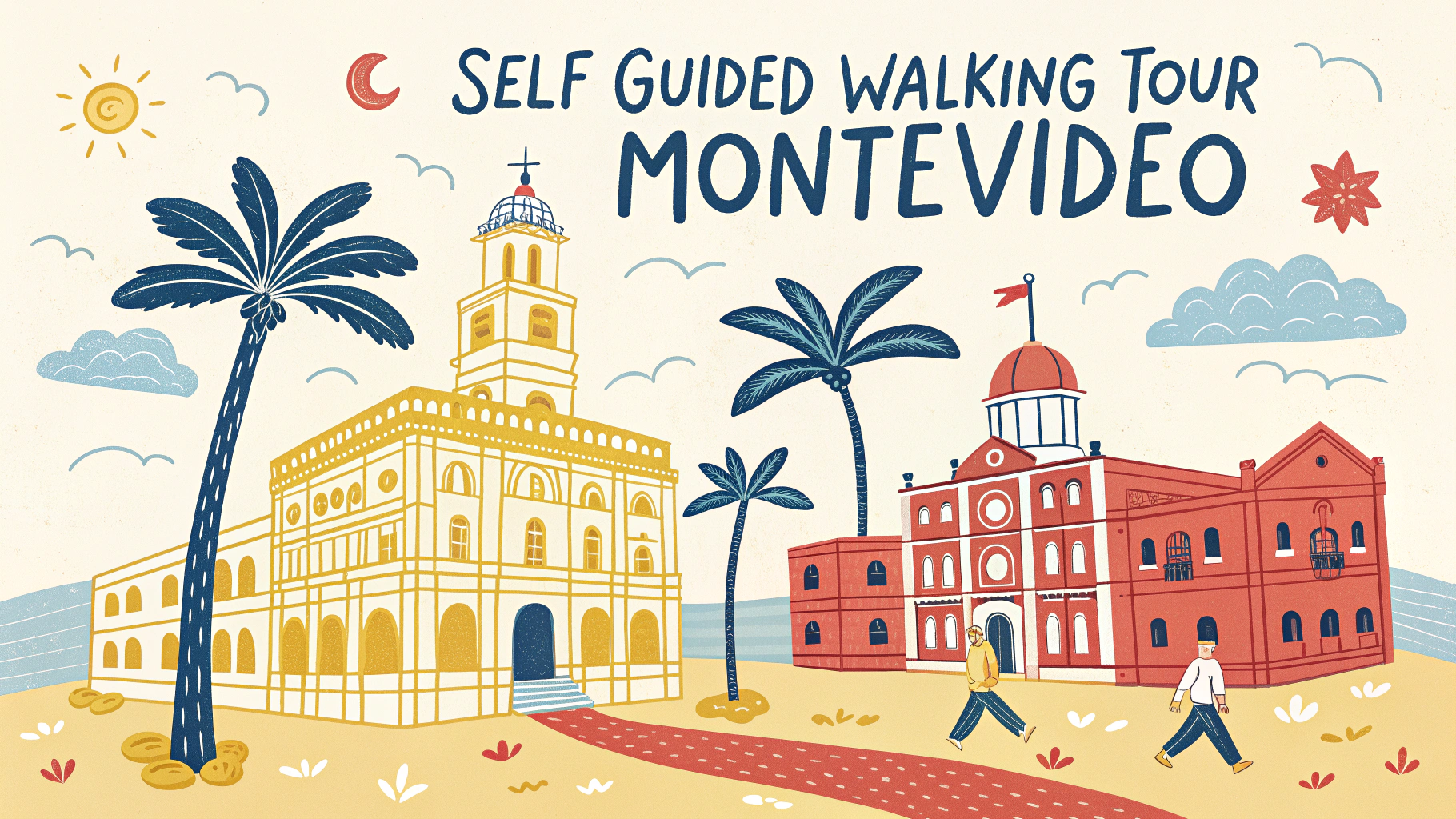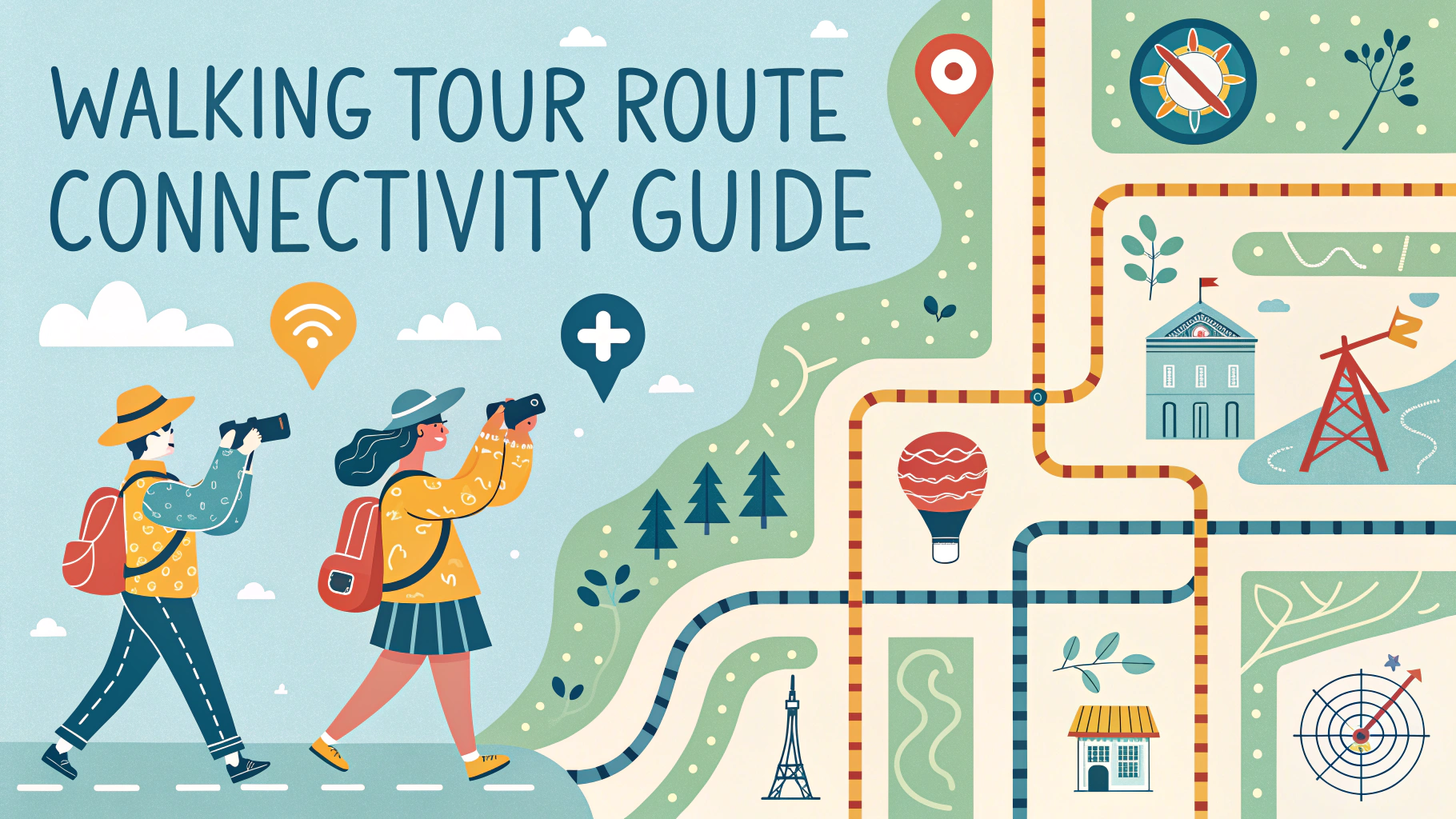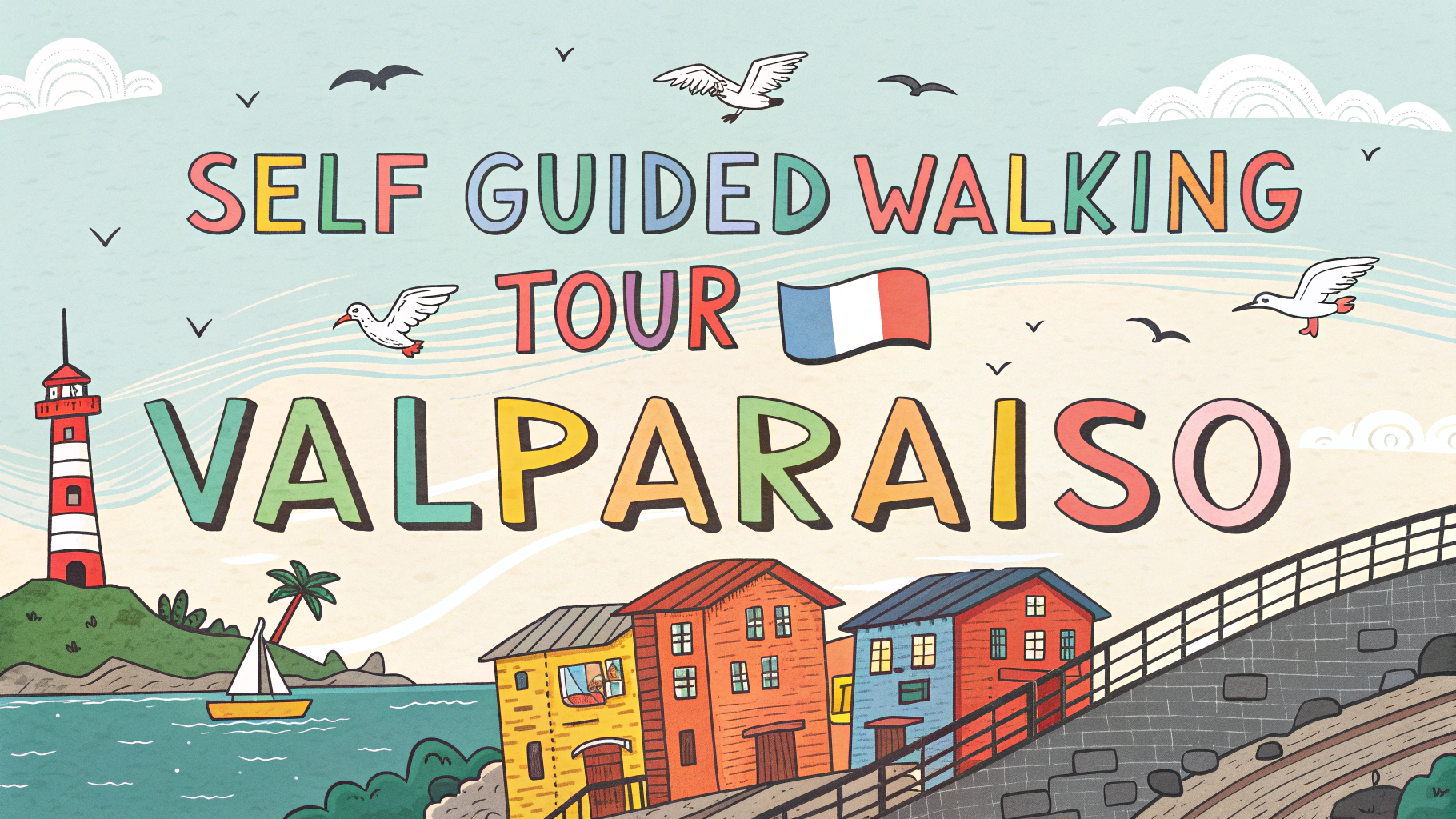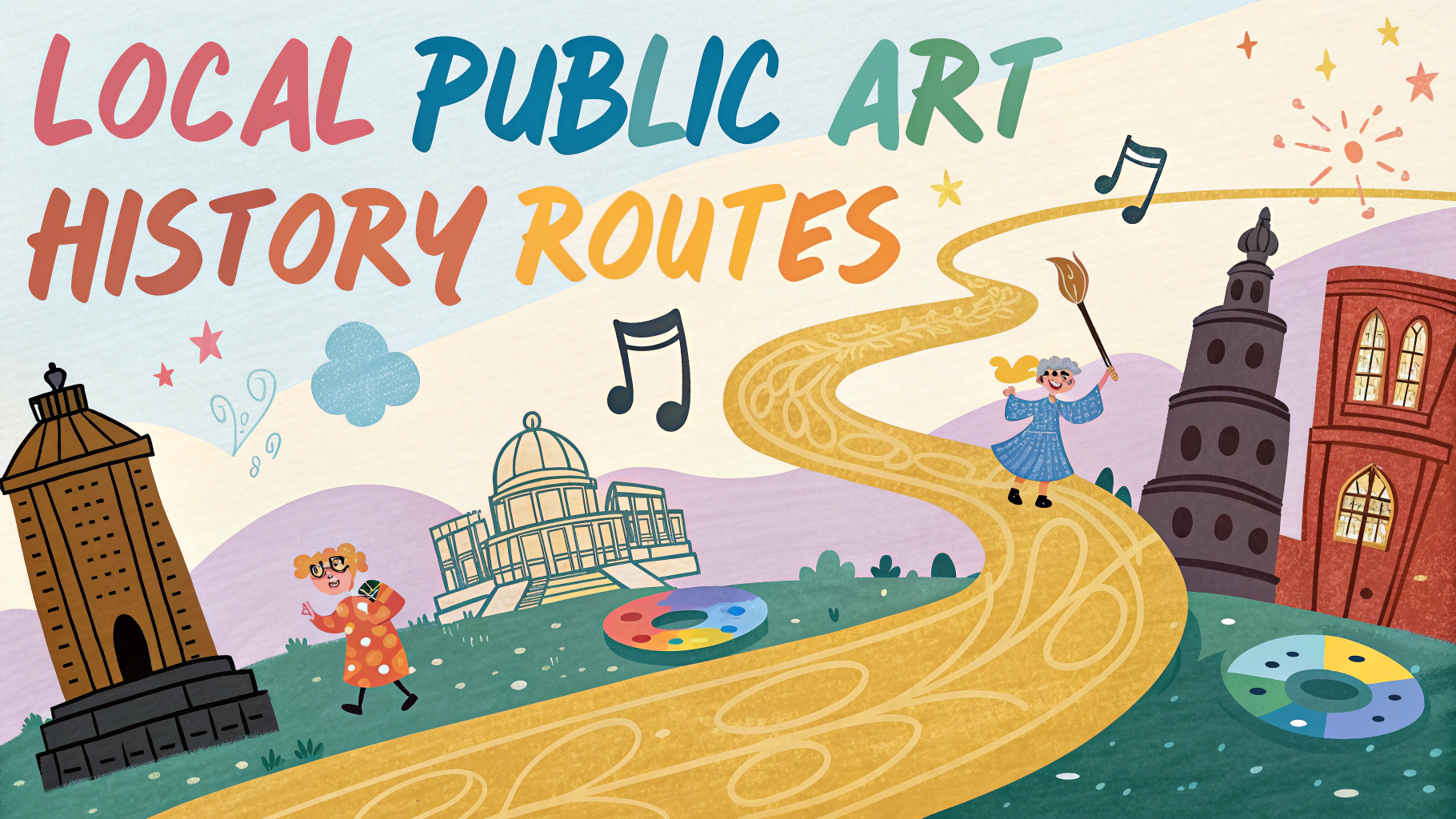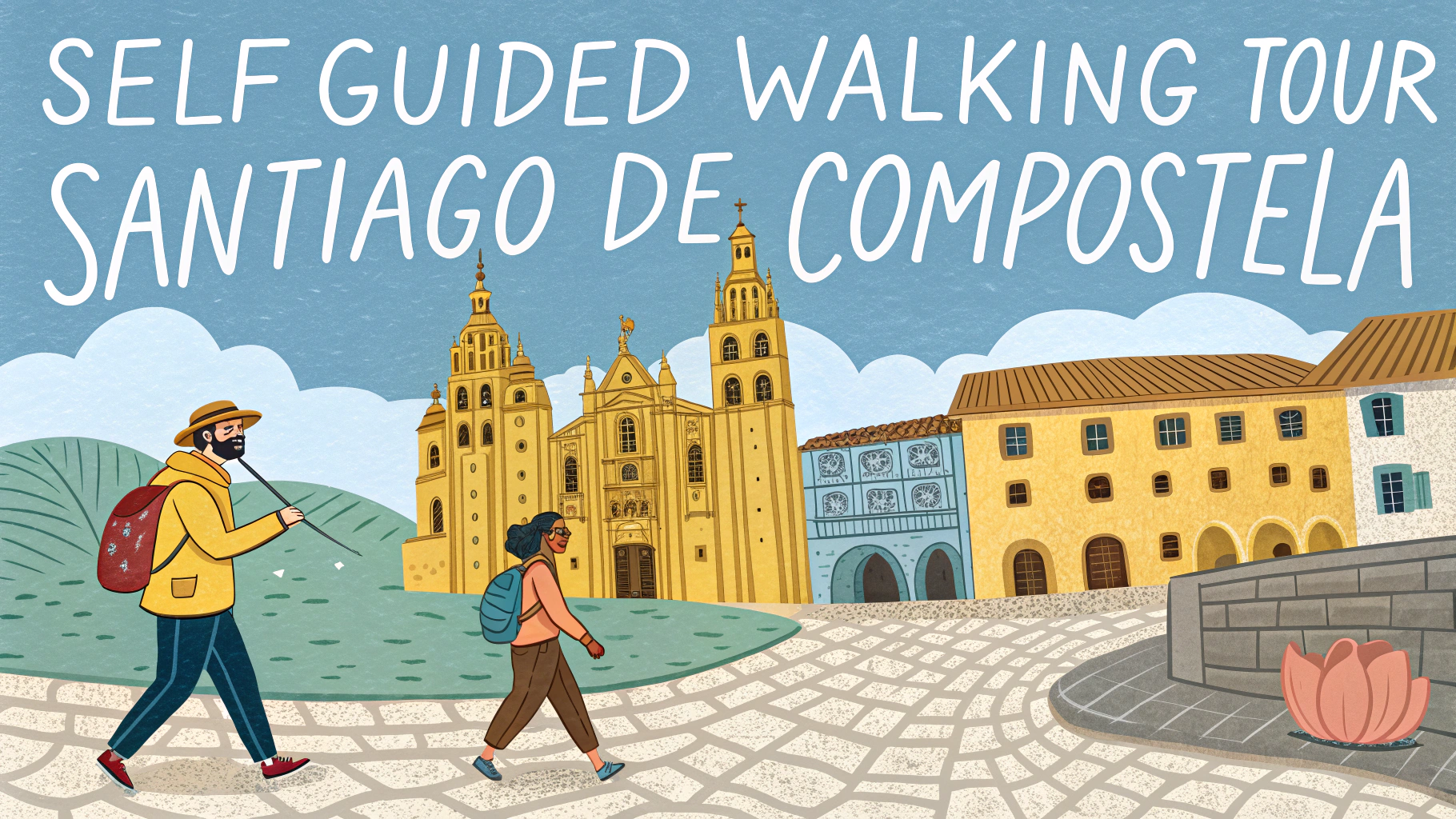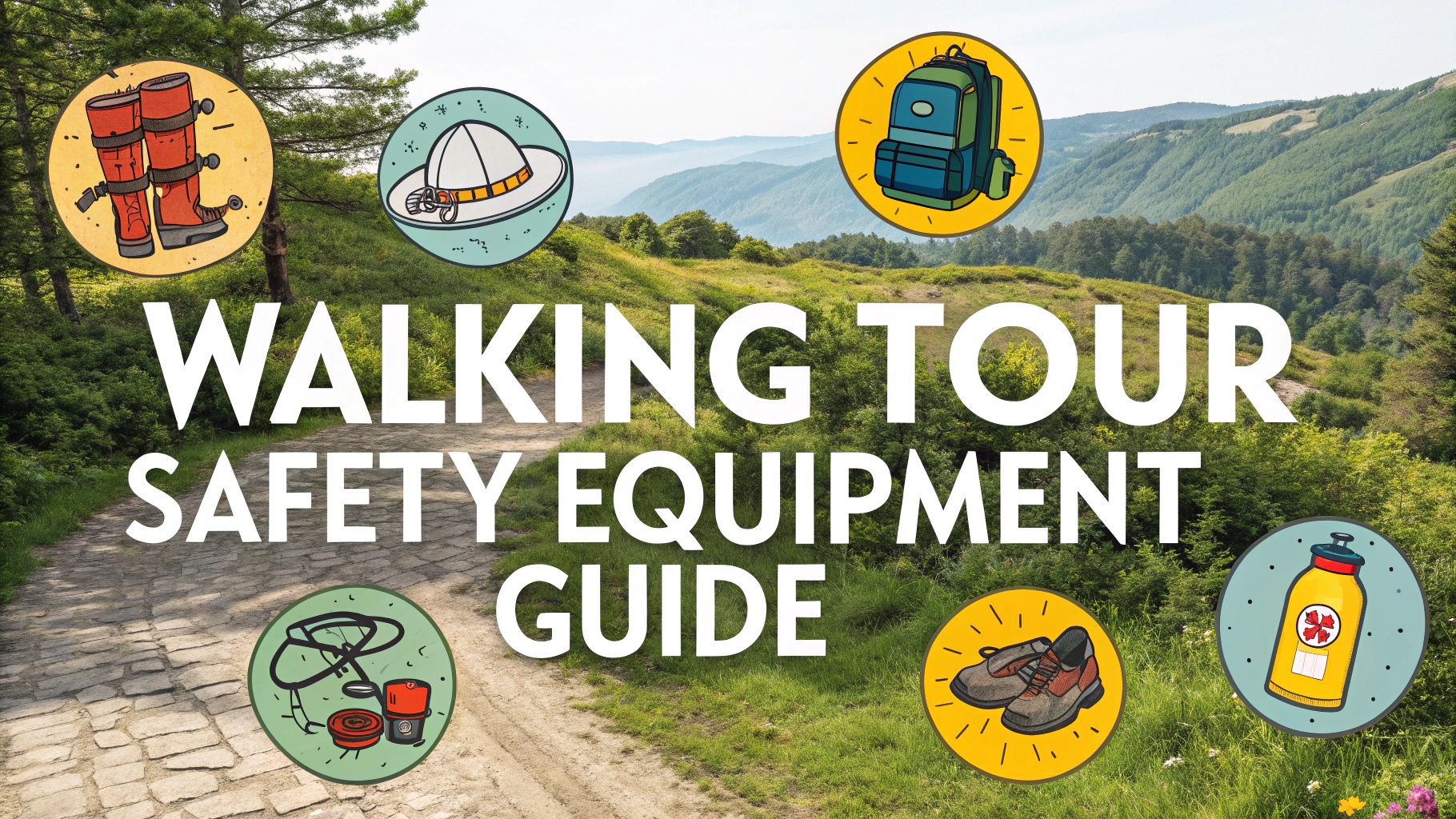Safety should always be the top priority when planning any walking tour, whether guided or self-guided.
This guide outlines key emergency preparedness steps for walking tours to help you stay safe and handle unexpected situations.
Essential Items to Pack
- First aid kit with bandages, antiseptic wipes, and basic medications
- Fully charged phone with offline maps downloaded
- Battery pack and charging cable
- Weather-appropriate clothing and spare layers
- Emergency contact card with local numbers
- Small flashlight or headlamp
- Water and energy-dense snacks
Pre-Tour Safety Steps
- Research your route thoroughly
- Check weather forecasts
- Share your itinerary with someone
- Save emergency numbers: local police, hospitals, embassy
- Learn basic phrases if in a foreign country
- Screenshot maps and important information
Emergency Contact Numbers to Save
| Service | Number |
|---|---|
| Emergency (US) | 911 |
| Emergency (EU) | 112 |
| Emergency (UK) | 999 |
Medical Considerations
- Carry any prescription medications
- Know locations of nearby medical facilities
- Bring health insurance cards and documentation
- Consider medical alert jewelry if applicable
Weather Safety Tips
- Check hourly forecasts before starting
- Know nearby shelter locations
- Carry rain protection
- Stay hydrated in hot weather
- Have warm layers for unexpected temperature drops
Navigation Safety
Download offline maps using apps like Google Maps or Maps.me before starting your tour.
Mark key waypoints including:
- Police stations
- Hospitals
- Public transportation hubs
- Safe rest spots
- Tourist information centers
Quick Safety Tips
- Stay aware of your surroundings
- Walk in well-lit, populated areas
- Keep valuables secure and out of sight
- Take regular breaks and stay hydrated
- Trust your instincts – if something feels wrong, leave the area
Remember to adjust these preparations based on your destination, weather conditions, and personal needs.
Recommended Safety Apps
- What3Words – Precise location sharing
- Red Cross First Aid – Emergency medical guidance
- AccuWeather – Minute-by-minute weather updates
- Google Translate – Offline language support
Group Safety Protocols
- Establish a buddy system for larger groups
- Set regular check-in points and times
- Agree on meeting spots if separated
- Share contact information among group members
- Designate group leaders and emergency coordinators
Night Walking Safety
- Wear reflective gear or light-colored clothing
- Use designated pedestrian paths
- Walk against traffic if no sidewalk available
- Carry a whistle or personal alarm
- Stay in well-lit areas
Urban Area Considerations
High-Traffic Areas
- Follow pedestrian signals strictly
- Use marked crosswalks
- Make eye contact with drivers
- Avoid walking while using phones
Tourist Districts
- Be aware of common scams
- Keep belongings close
- Know tourist police locations
- Avoid displaying expensive items
Documentation Requirements
- Carry photocopies of important documents
- Store digital copies in secure cloud storage
- Have travel insurance information accessible
- Keep emergency contact details updated
Conclusion
Proper preparation and awareness are crucial for safe walking tours. Always prioritize safety over scheduled activities and maintain flexibility in your plans. Regular updates to your emergency contacts and staying informed about local conditions will help ensure a secure touring experience.
Remember to review and update your safety protocols regularly, especially when visiting new destinations or changing seasons. Stay vigilant, trust your instincts, and enjoy your walking tour with confidence knowing you’re well-prepared for emergencies.
FAQs
- What essential safety items should I pack for a self-guided walking tour?
A fully charged phone, portable charger, first aid kit, weather-appropriate clothing, comfortable walking shoes, water bottle, map (digital and paper), emergency contact information, flashlight, and basic identification. - How do I prepare for unexpected weather changes during a walking tour?
Check weather forecasts before departing, carry a lightweight rain jacket or poncho, dress in layers, bring sun protection, and know nearby shelter locations along your route. - What’s the best way to navigate if my phone dies during a self-guided tour?
Always carry a printed map and written directions as backup, familiarize yourself with major landmarks before starting, and note public transportation stops along the route. - How can I ensure personal safety during solo walking tours?
Stay in well-populated areas, walk during daylight hours, share your itinerary with someone, keep valuables secure, stay aware of surroundings, and avoid isolated areas. - What medical precautions should I take before starting a walking tour?
Carry any personal medications, know your physical limitations, bring basic first aid supplies, keep emergency contacts handy, and research nearby medical facilities. - How much water should I carry for a walking tour?
Carry at least 16-20 ounces of water per hour of walking, more in hot weather or high humidity, and know where to refill along the route. - What should I do if I get lost during a self-guided walking tour?
Stay calm, retrace steps to the last known location, ask locals for directions, head to the nearest main street, or call emergency services if necessary. - How can I prepare for bathroom emergencies during a walking tour?
Research public restroom locations beforehand, carry tissues/sanitizer, note cafes and restaurants along the route, and consider downloading a public restroom finder app. - What’s the recommended distance to plan for a self-guided walking tour?
Plan for 2-5 miles for a comfortable half-day tour, accounting for stops and photo opportunities, with consideration for your fitness level and terrain difficulty. - How do I handle encounters with aggressive people or animals during a tour?
Stay calm, avoid confrontation, keep distance, carry a whistle or personal alarm, know local emergency numbers, and move to populated areas quickly.
